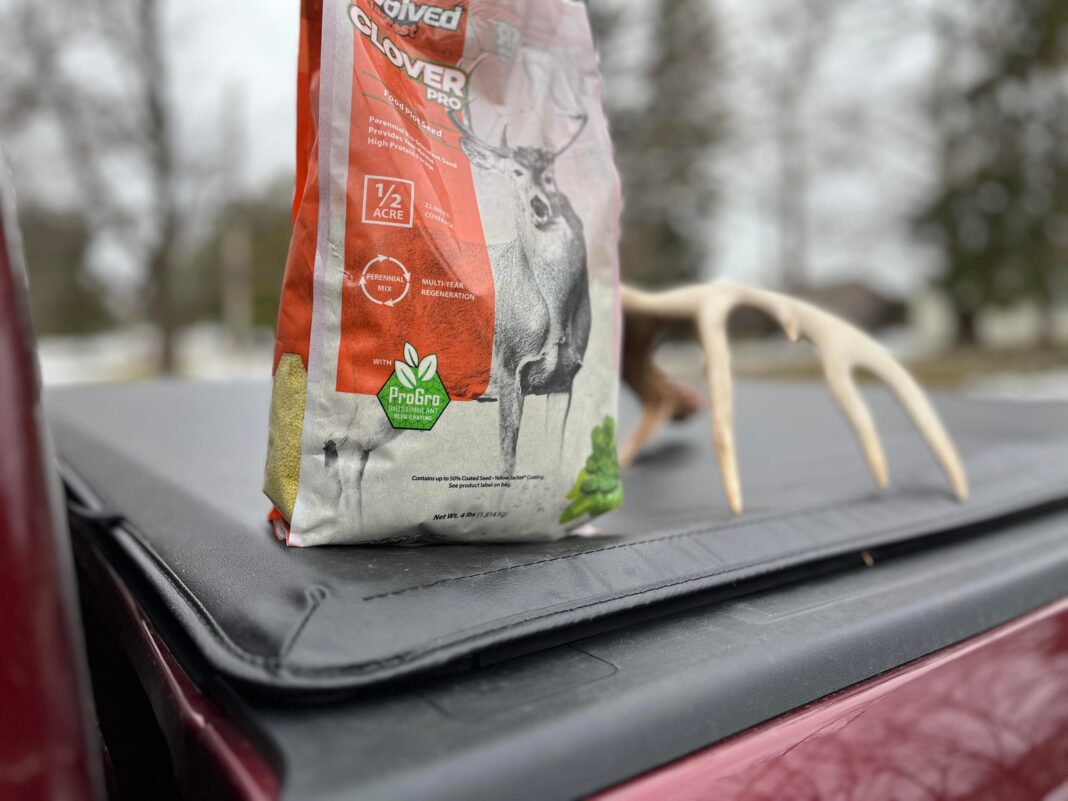In less than 30 days, many parts of deer country will have new weed growth and forage growth with soil temperatures warming above 59 degrees. That means you should be getting ready to plant your spring food plots now, and if you haven’t already started, you should be cleaning up your planting site now by getting rid of those pesky weeds.
Weeds are bad for fall food plots; they make seeding difficult and compete with your wildlife plantings, they crowd out freshly germinated plants, and rob desirable deer forages of food, water, and sunlight. Late summer weeds and grasses are public enemy No. 1 when it comes to fall food plots.
The easiest way to rid a food plot site of weeds and unwanted grasses is to spray the entire plot site location with a 2% glyphosate solution such as Roundup®. The best time to spray is at least 2 weeks before preparing a seedbed for planting, which is now in the North and within the next few months if your location is any place other than the Deep South. Spraying now will give weeds plenty of time to die and make it much easier to prepare a nice, even seedbed for planting. It will also give you time to identify any areas that the sprayer missed and allow you a second shot if needed. Glyphosate treated plants typical begin to brown down in 7-10 days. In 2 weeks you will clearly see what you have hit and what was missed. You can then go back and re-spray the missed areas and work the site a few days later after treating a location.
Just about any type sprayer will work; we’ve used them all. We do our 3-acre and larger fields with a 250-gallon tractor rig. For ATV sprayers for smaller plots, we like 25 gallons and have done plenty of spraying with backpack sprayers and even handheld lawn and garden models. They all work; the trick is to choose the right size for your spraying equipment to do the job.
When spraying, be sure to keep track of what you have sprayed and make sure everything growing in the area gets a good dose of glyphosate. This requires careful attention to detail. Spraying is not a random procedure and is best done systematically. You generally start at one end of a plot, spray to the opposite end, reverse ground and spray another swath on the way back. Anyone who has mowed a lawn (in straight lines) will know how to do it.
It’s important to follow the manufacturer’s directions when applying herbicides like glyphosate but generally speaking, you will be mixing 2 oz. of chemical for every gallon of water. Adding an equal amount (2 oz.) of crop oil as a surfactant for every gallon of water will ensure better adhesion and a surer kill, and allow you to better keep track of where you have sprayed.
If you are anti-chemical, you can get out your hoe, hand cultivator or disc if you have something to run it with, but dicing out weeds is definitely the long way around the block and a tough row to hoe (pun intended). Whatever path you take, the time to start is now. Weeds have their place in a wildlife habitat program, but it is definitely not in fall food plots.



















![The Best Deer Camp Chili [VIDEO] Deer Chili Ingredients, Tomatoes, Chili Spices](/wp-content/uploads/2015/10/Deer-Chili-Deer-Camp-Recipe-218x150.jpg)
![How to Call Elk Early in the Season [VIDEO]](/wp-content/uploads/2016/08/byers003-218x150.jpg)




![Idiots Disturb Hunter: How Would You Have Handled It? [VIDEO]](/wp-content/uploads/2015/10/DSC00110-e1474487693878-100x70.jpg)
![Albino Buck Shocked to Shed His Antlers [VIDEO]](/wp-content/uploads/2015/10/AlbinoDeer-100x70.jpg)